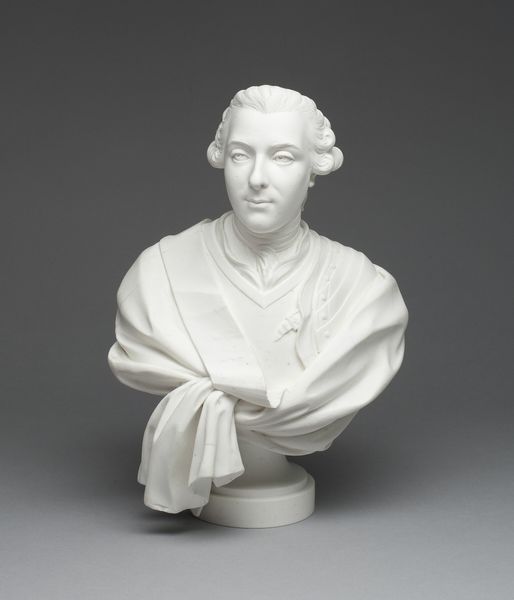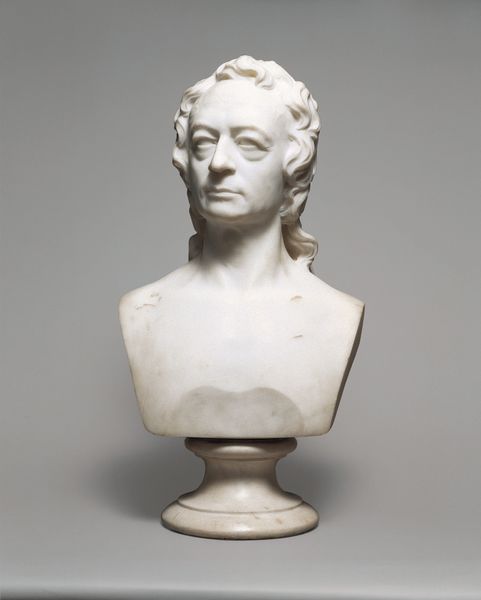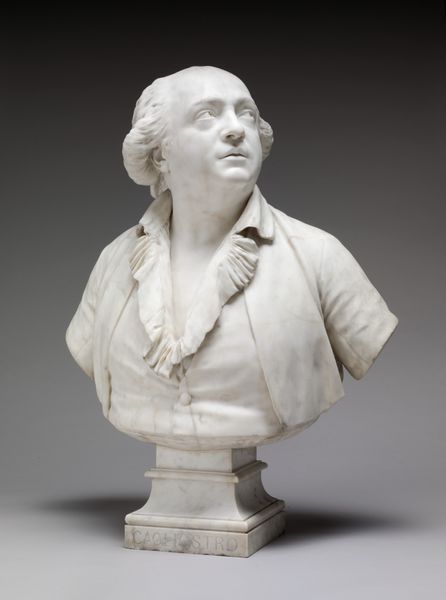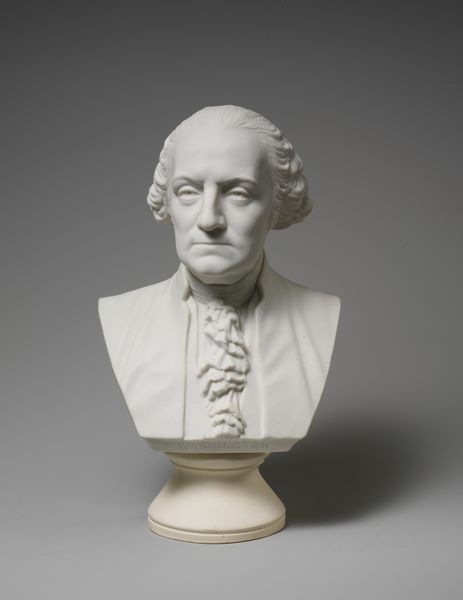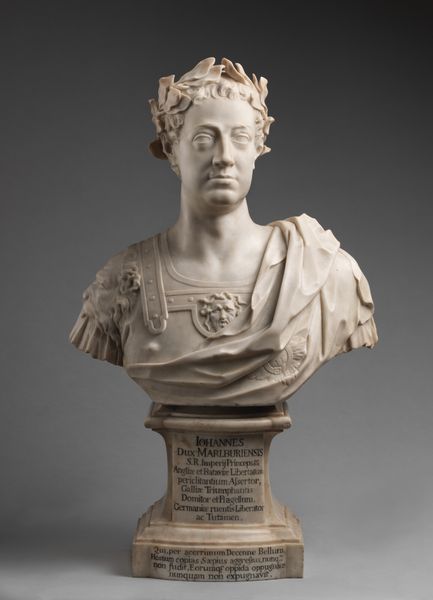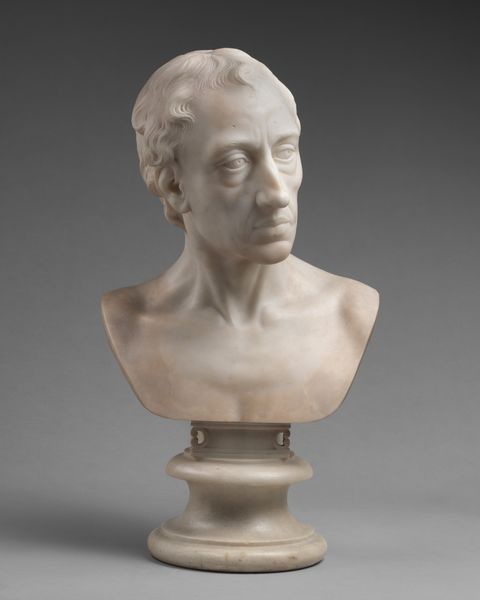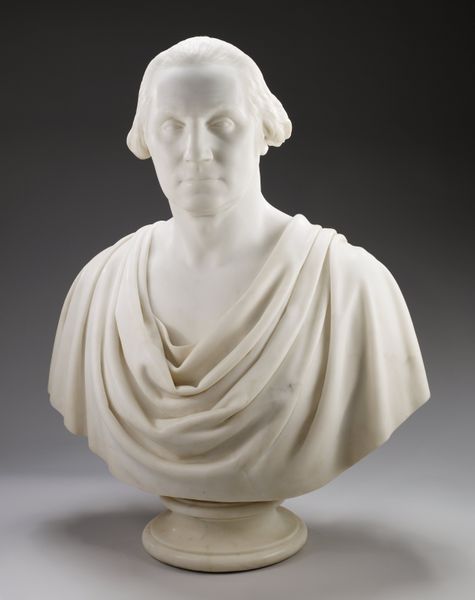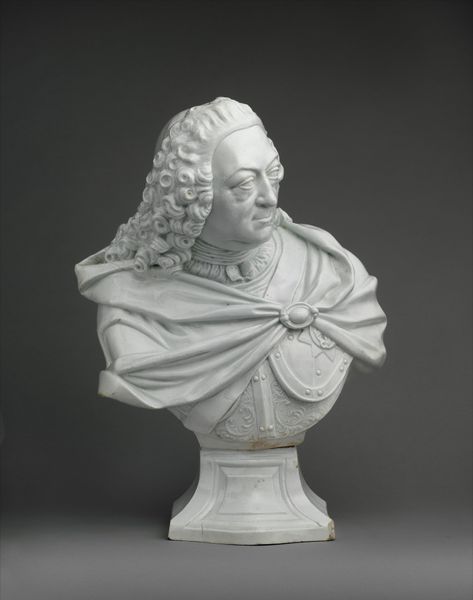
Louis XV (1710–1774), King of France 1757
0:00
0:00
sculpture, marble
#
portrait
#
sculpture
#
sculpture
#
decorative-art
#
marble
#
rococo
Dimensions: Overall (confirmed): 30 1/2 × 25 1/4 × 16 3/8 in., 219lb. (77.5 × 64.1 × 41.6 cm, 99.3377kg)
Copyright: Public Domain
Curator: Standing before us is a marble bust of Louis XV, King of France, crafted by Jean-Baptiste Lemoyne the Younger in 1757. It resides here at the Metropolitan Museum of Art. Editor: My initial impression is one of calculated serenity. There's an undeniable coolness radiating from the marble, a very...distanced regality. Curator: Indeed. Lemoyne, working at the height of Louis XV's reign, presents us with a very specific image of kingship. Rococo portraiture was often less about literal representation and more about constructing a visual narrative of power and legitimacy. This wasn't simply a portrait; it was propaganda, almost. Editor: Propaganda through materiality. I am drawn to the carving—look at the crisp folds of the sash, the delicacy of the lace, all rendered from this single block of marble. What labor went into extracting, transporting, and then transforming this raw material into a symbol of the king’s authority? Curator: Exactly. The choice of marble itself speaks to power; the stone was quarried in areas that belonged to, or traded with, the French crown. It also demonstrates royal patronage of the arts. Remember, Lemoyne was a Royal sculptor, working under the auspices and protection of the monarchy. The display of wealth and the commissioning of artworks like this also served as a mechanism to show the world the might and grandeur of the King and France itself. Editor: The labor is both hidden and displayed. While it presents royal luxury, it also depended on exploiting countless artisans to acquire the marble, sculpt it to a pristine shine, and ultimately glorify the very idea of the monarchy. There’s such tension. Curator: It certainly embodies the contradictions of the era: absolute power juxtaposed against burgeoning Enlightenment ideals. The coolly aloof expression, that starched elegance. The artwork silently broadcasts power and invites questions. Editor: Yes, now when I look, it no longer seems serenely beautiful. I see the cold calculation. So much material and so much effort placed in this singular message of divine authority. Curator: Reflecting on Lemoyne’s work, one cannot ignore the forces that molded its creation and reception, especially considering what the bust represented to both the aristocracy and those whom they subjugated at that moment in French history. Editor: Right. To truly appreciate it, we must also consider all of the hands that touched it, the social conditions from which this kind of art springs forth.
Comments
No comments
Be the first to comment and join the conversation on the ultimate creative platform.
